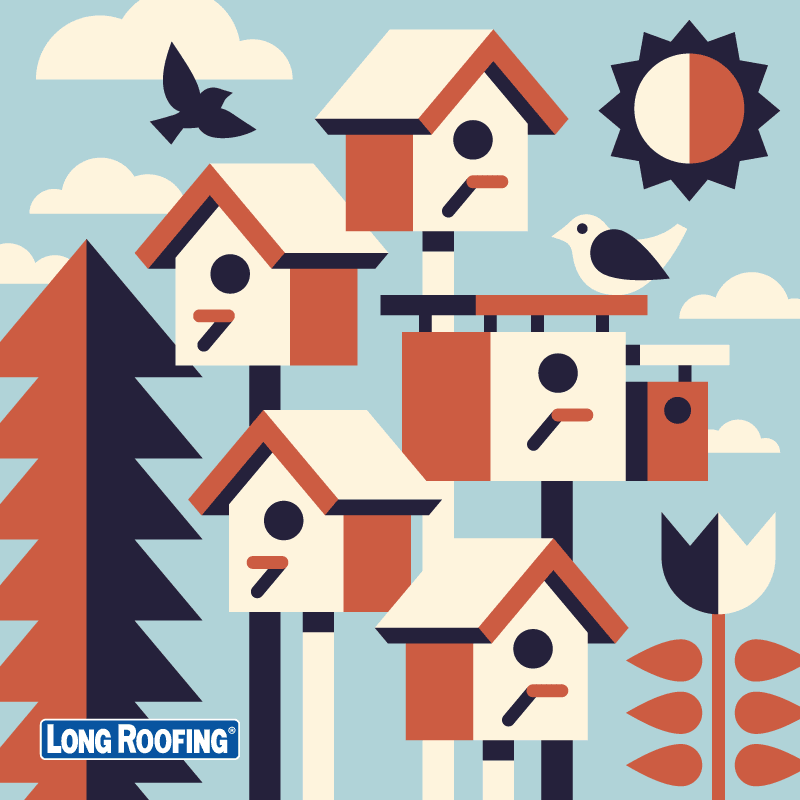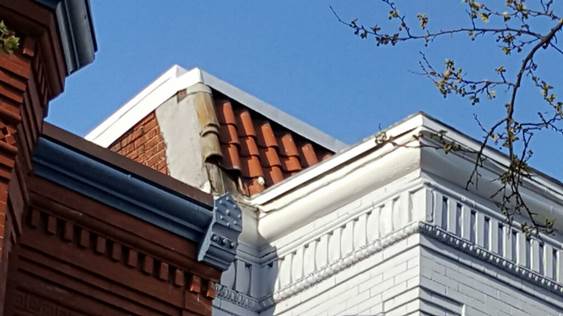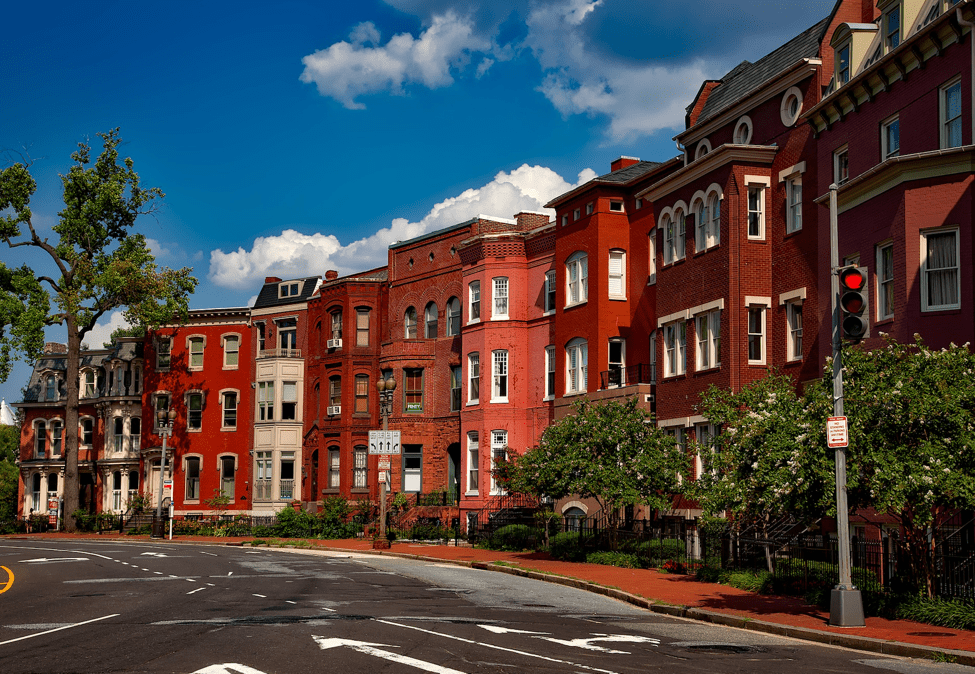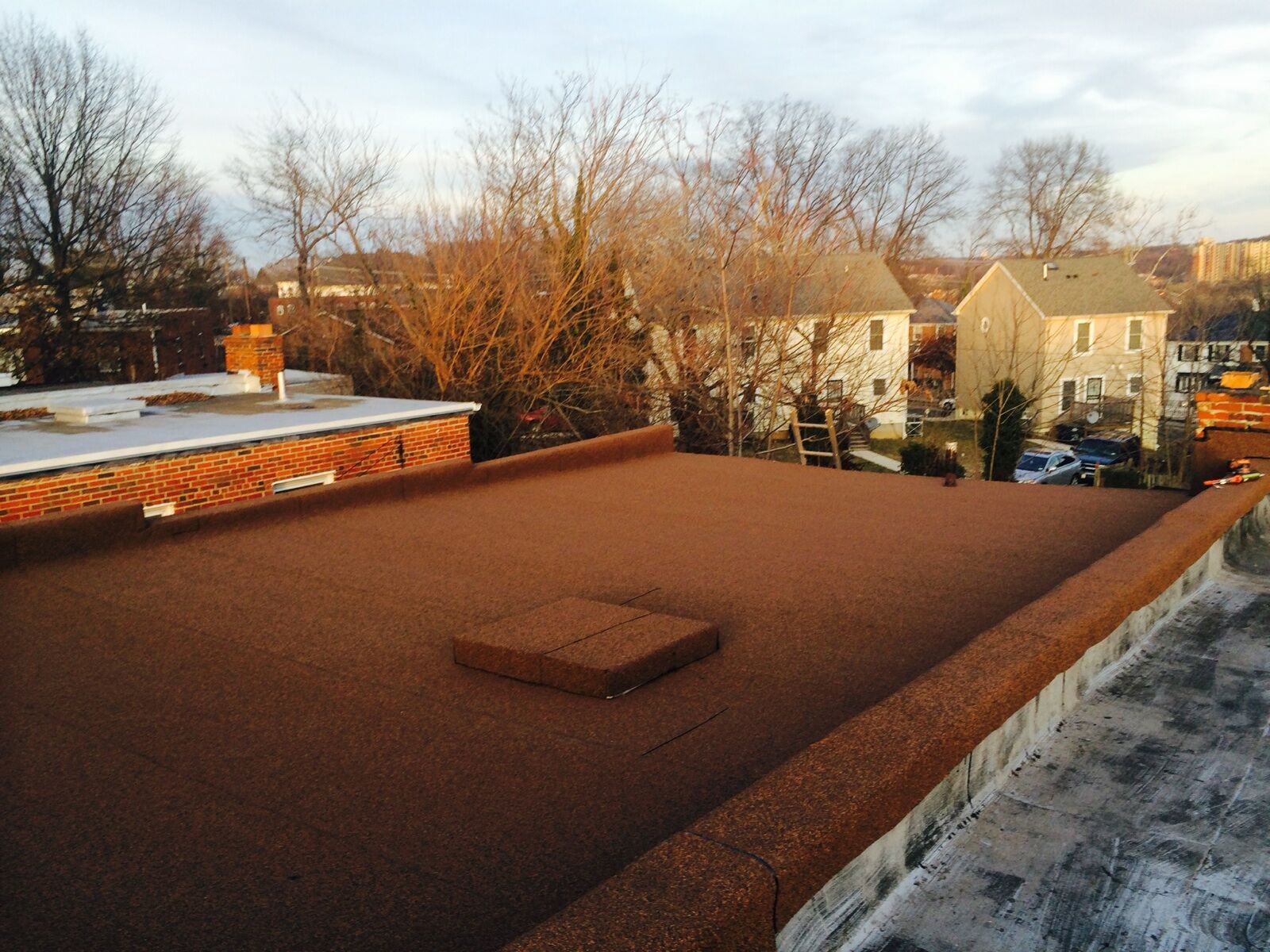A Comprehensive Guide to Flat Roof Systems
Published on Tuesday April 25, 2017
Flat roof systems are a bit of an outlier. Most modern residential homes have relatively steep pitches. However, in many U.S. cities with older housing stock — think Federal Hill in Baltimore or Alexandria, Virginia‘s Old Town — the roofs are often flat or have very low slopes.
Flat roofs make replacing a roof a challenge. There’s a lot to know about flat roof systems and how they work to keep your home safe and dry.
What is a Flat Roof?
A flat roof is generally any roof with a pitch of 1-10 degrees. That means flat roofs aren’t actually flat. It may look horizontal but often has a minimum slope of 1/4 inch per foot. This allows water to run off the roof to prevent damage.
Quick language lesson: Pitch and slope are terms used to describe the angles of your roof.
- Pitch is the relationship between the roof’s rise — the vertical change in height for each horizontal unit of the roof — and span, which is the distance across your roof.
- Slope is the relationship between the roof’s rise and run, or the horizontal change in distance across your roof.
Slope and pitch create runoff. Water pools or puddles when there is no slope or pitch, leading to roof damage. You want water to flow into a gutter system and away from the foundation of your home. Flat roofs and low-sloping roofs don’t drain as quickly as it does with other roofing systems.
Pros and Cons of Flat Roofs

You may have noticed: The flat roof system is often used in commercial and industrial applications.
4 things to consider with flat roofing systems:
- Structural Elements
The sheer size of many commercial buildings makes steep-sloped roofs impractical. A steeper roof is more difficult to design and maintain. Many towns have height restrictions that businesses can meet with a flat roof. Multi-family homes such as row houses or townhouses share the same roof size setbacks.
- Added Useable Space
HVAC and refrigeration components are usually installed on the roofs of commercial buildings and other flat roofing systems. This allows more valuable space for home or business owners in dense urban neighborhoods.
- Easier Inspection and Maintenance
Commercial buildings are inspected frequently due to liability issues. A flat roof is said to be easier to inspect and maintain should an issue arise. As homeowners, our busy lives don’t lend themselves to roofing maintenance — we’d rather fix it and forget it! In most cases, a pitched roof with asphalt shingles is the preferred residential option.
- Improved Energy Efficiency?
Flat roofs may be more energy efficient, depending on the materials used and the location of the building. Some homeowners have reaped energy savings of up to 30 to 40 percent with a flat roof.
Atactic polypropylene, or APP, is an ingredient used in some flat roofing materials. This recycled byproduct may also appeal to homeowners trying to go green.
How Long Do Flat Roofs Last?
Flat roofs demand more maintenance and may be more prone to leaks. This may not be an issue for commercial building owners whose properties are subject to regular inspection. Homeowners , however, usually aren’t qualified (or interested) in doing their own inspections and maintenance.

Adam Lewellen, sales manager at Long Roofing, notes that a well-made low slope roof is designed to last for the long haul. Inadequate repairs, however, and bad weather can hinder performance.
“Most homeowners do not do the maintenance or replace their flat roofs on time, because they can’t see them from the ground,” Adam says.
“Typically, by the time roofers are called, it has been 20 or 30 years (since the last roof replacement) and a lot of water damage has already occurred from premature failure or other type of catastrophic event.”
Types of Flat Roofs

There are several flat roof systems available to homeowners:
- Built-up roofing (BUR)
- “Rubber roofs”(e.g., ethylene propylene diene monomer, known as EPDM)
- Modified Bitumen Systems (MBS)
- Torch-down systems
- Self-adhering systems
Built-up roofing (BUR)
- Most often used in commercial and industrial applications, this flat roof system contains layers of waterproof membrane (such as a treated fiberglass basemat), tar and gravel to seal the flat roof surface. This flat roof system is still used in some residential applications because of its affordability and fire resistance. There are downsides: gravel makes this roof heavy and can clog gutters; the sealing liquid (tar/asphalt) is messy and has a foul odor.
Rubber roofs (EPDM roofs)
- Popular in residential applications. These flat roof systems contain one layer of rubber or a rubber-type material that is applied without heat. Adhesive metal straps or gravel are used to secure the rubber-roof systems. On the plus side: rubber is waterproof and is relatively easy to install. Drawbacks include potential leakage at the seams or from product shrinkage.

MBS: The preferred alternative.
- One of the fastest-growing and most popular flat roof systems in commercial and residential applications are modified bitumen systems (MBS). An MBS uses a special combination of coated basemat layers to seal the roof instead of applying a hot liquid adhesive to uncoated basemat. MBS flat roof systems have a reduced installation time when compared to BUR systems. This can be a cost-savings benefit. An MBS roof can be sealant-treated after the warranty period, extending roof life for up to 30 total years of use.
There are two basic types of MBS systems: 1) Torch-down systems and 2) self-adhering systems.
Torch-down systems use a special combination of layers to torch-seal the bituminous product layers with the help of specially designed substrates.
One example: the CertainTeed Flintlastic GTA flat roof system. It works for all stand-alone roof situations where a torch-application is acceptable.
The GTA membrane is preferable to the self-adhering option in most cases. It’s made from asphalt, fiberglass-reinforced mat and APP modifiers.
A self-adhering system (SAS) is similar to a conventional MBS. The SAS uses coated bitumen basemat to provide a waterproof seal on flat and low-sloping roofs. This product is ideal when a torch cannot be used. Add-on porches or garage roofs that intersect with wood or vinyl siding are common places where you’ll see an SAS flat roof system.
CertainTeed’s Flintlastic SA is an example of a self-adhering product that can be used in low-slope applications.
Looking for a quality flat roofing contractor?
Looking for a contractor who can tackle the unique needs of a flat roof system? Long Roofing fits the bill.
Our team can help give you a new low-slope roof that will last for decades. Call today to learn more!
Interested in Long Home Products?
See our special offers now.








